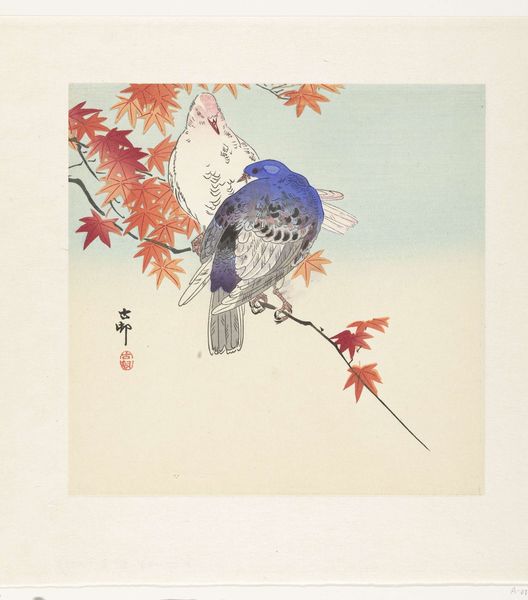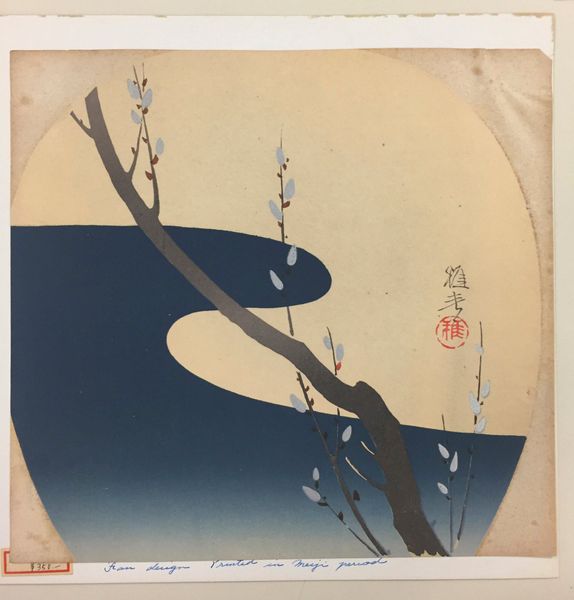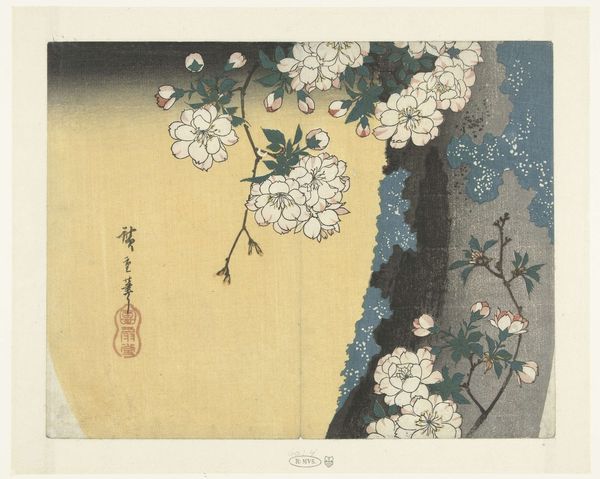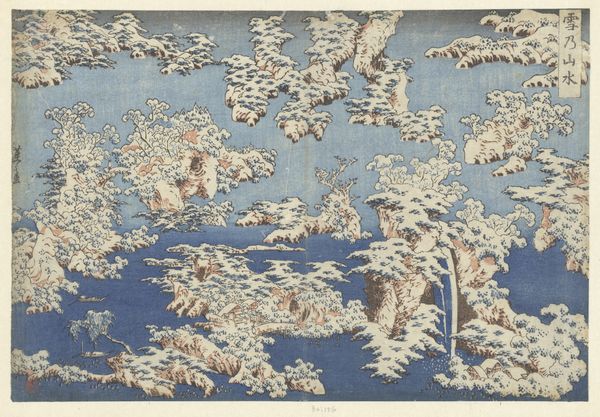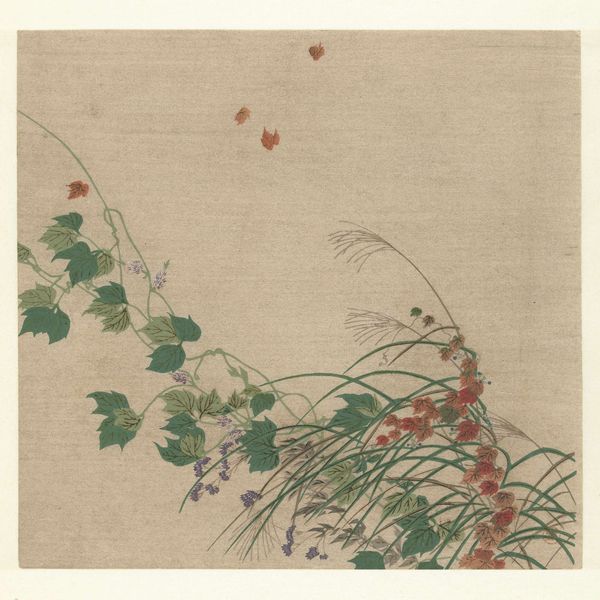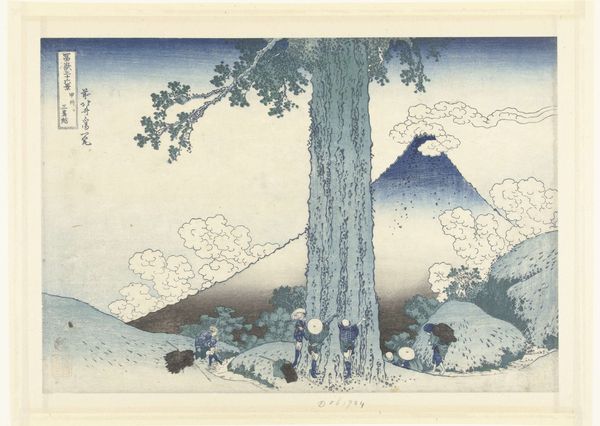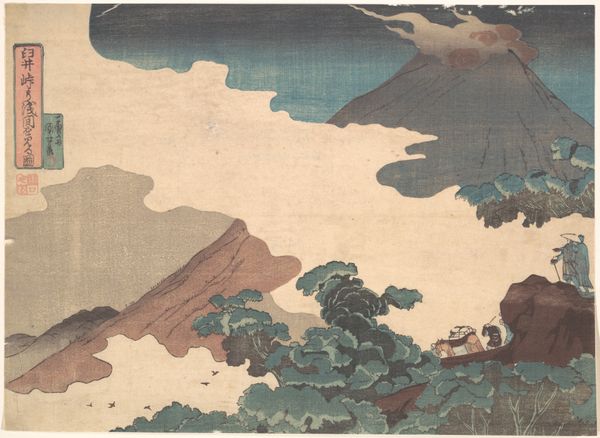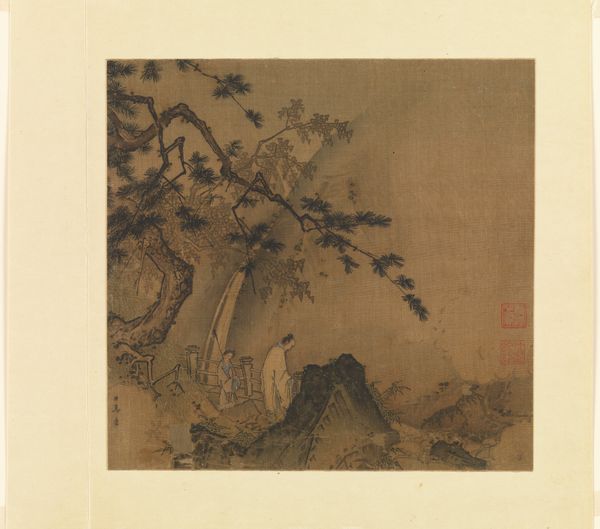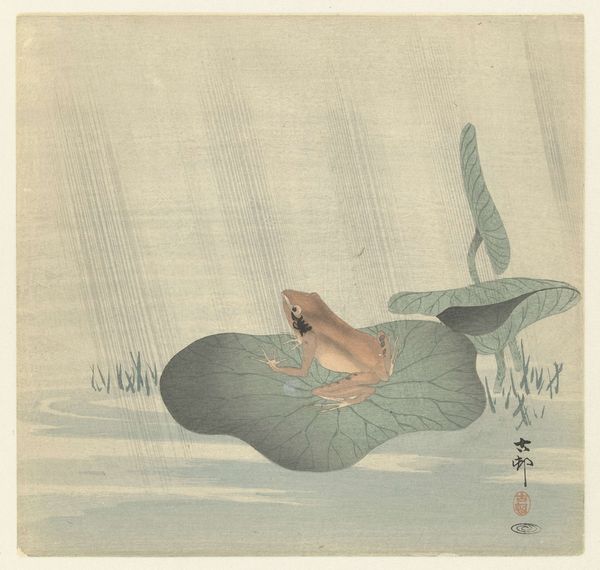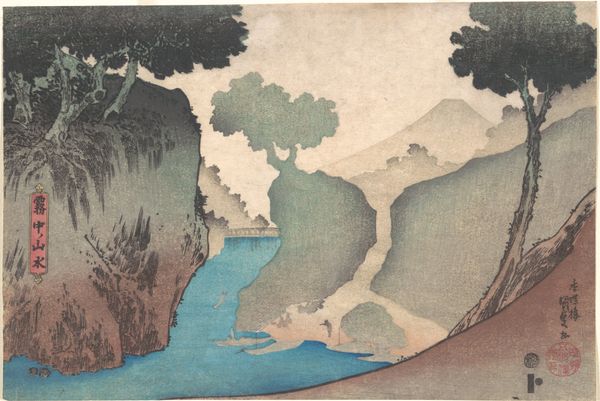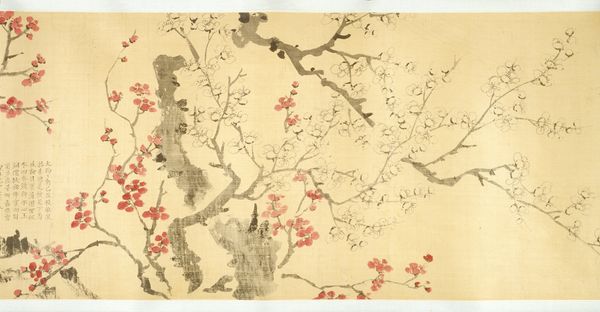
Dimensions: height 240 mm, width 249 mm
Copyright: Rijks Museum: Open Domain
Editor: Here we have "Tree and Chrysanthemums" created between 1890 and 1900 by Tsukioka Kôgyo. It's a lovely woodblock print held at the Rijksmuseum. I’m struck by its gentle, almost ethereal quality, particularly the way the chrysanthemums seem to spill into the stream. How do you interpret this work? Curator: It’s a captivating piece. The Ukiyo-e style is prominent, but it is important to note that this dates towards the end of the Meiji period. We see Western artistic influences subtly shaping Japanese art, think of the Impressionist color palette, which is at odds with older prints of this nature. Considering the socio-political backdrop of modernization, how does the imagery—a solitary tree and flowers—speak to a changing society? Editor: Hmm, that’s a great point. Perhaps the tree represents rooted traditions and the chrysanthemums hint at blossoming modernity? Curator: Potentially, but it is difficult to state outright. Furthermore, where do we position such pieces, intended for popular audiences, in our canon of artworks. What role does reproduction have in elevating the status, or discrediting the value, of such prints? It speaks volumes of the complexities within Ukiyo-e prints themselves. Editor: That's fascinating! It makes me think about the power of art not just to reflect the beauty of nature but to embody social commentary and spark academic questions. It's much more nuanced than I initially realized. Curator: Exactly! By understanding the history surrounding such a print allows you to explore further questions surrounding class, societal impact and access to fine arts.
Comments
No comments
Be the first to comment and join the conversation on the ultimate creative platform.
